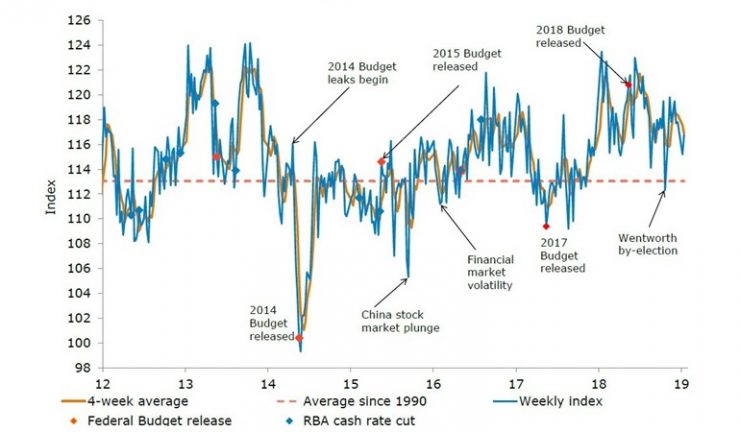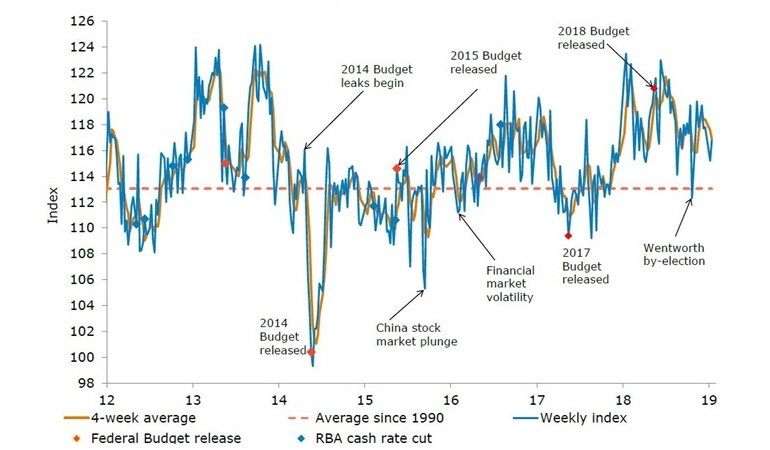Significant dip in January.
The Westpac-Melbourne Institute Index of Consumer Sentiment fell 4.7% to 99.6 in January from 104.4 in December.
Senior economist, Matthew Hassan, said the cautiously optimistic consumer mood that prevailed through 2018 has evaporated with sentiment beginning the new year with a slightly pessimistic view.
Consumer confidence is under pressure from a number of fronts including a continuing slide in house prices, disappointing updates on economic growth, ongoing concerns around global trade wars and political uncertainty. “The continued optimism late last year was something of a surprise, implying the consumer mood was still getting considerable support from low interest rates, diminished fears of rate increases, a firm labour market, and at the margin, lower petrol prices,” he said.
While January sentiment fall is significant, marking the biggest monthly decline in over three years, it should be treated with some caution as the index is adjusted to remove a regular boost to sentiment over the holiday season.”Even allowing for this, the update clearly marks a poor start to the new year, and the index is down 5.3% compared to this time last year.”
All index components recorded declines with the biggest falls around expectations for the economy and assessments of current finances.

The economic outlook next 12 months sub-index dropped 7.8%, the biggest fall since September 2015 when sentiment was hit by a sharp sell-off in financial markets and a disappointing update on Australia’s growth. Consumer views on family finances also recorded a poor start to the year, posting a sharp 5.9% decline taking it back to near 2018 lows.
Consumer attitudes towards major purchases were more resilient, with the time to buy a major household item sub-index dipping just 1.3%. This sub-index still remains below average with the weak reads around family finances pointing to a continuation of the sluggish consumer spending growth seen through 2018.
“The Reserve Bank Board next meets on February 5 with the bank also due to release updated forecasts in its February statement on monetary policy on February 8. The weakening in consumer sentiment will be unsettling for the RBA given its concerns about downside risks to the outlook for consumer spending.”
With the disappointing September quarter national accounts update materially lowering the starting point for growth and consumer momentum looking softer, the bank is likely to lower both its 2018 and 2019 growth forecasts from the strongly above trend forecast it published in November, he said.
“We expect this tempered view on growth to also temper the bank’s attitude towards rates. Westpac continues to expect rates to remain on hold in 2019 and 2020.”
However data from ANZ Roy-Morgan collected on January 13-14 showed that current financial conditions rose 2.8%, after three consecutive falls. And in some good news for retailers, there was a marked improvement in the time to buy a household item index, registering 3.9% growth. This took the index to its highest level since the first half of October and above the long-run average.
ANZ head of Australian Economics, David Plank, said the increases in financial conditions and time to buy a household item reverses a good portion of the decline captured in the first survey of 2019 and consolidates consumer confidence at a level comfortably above the long-run average.
“The resilience shown by Australian households amidst weak global and domestic cues is encouraging,” he said, “and robust job vacancies data may have also played a role.”

